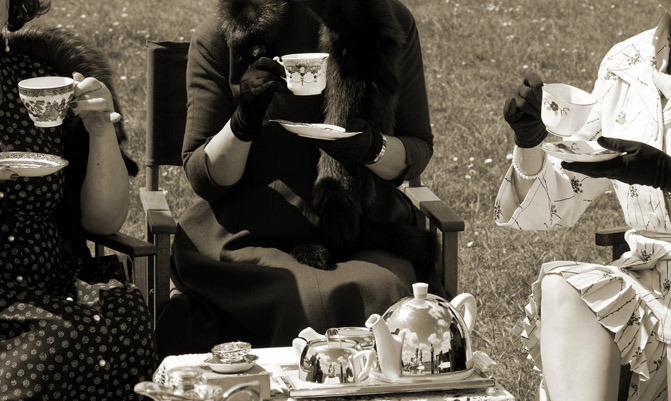The Woman Who Invented Afternoon Tea
When Americans hear the term "high tea," they probably picture a small group of proper ladies (mostly) whiling away the afternoon sipping Earl Grey or Darjeeling from bone china cups while discreetly nibbling scones, slices of sponge cake, or cucumber sandwiches on crustless bread, and indiscreetly gossiping. The "high" might well be taken to describe their extended pinkies.
In fact, that sort of affair is more properly called simply "afternoon tea" — and afternoon tea was invented in the 1840s because the Duchess of Bedford's stomach was growling. The duchess, Anna Maria Russell, a confidante of Queen Victoria born on September 3, 1783, was visiting her friend John Manners, the Duke of Rutland, at his imposing Belvoir Castle.
It had long been the custom in England to eat dinner in the afternoon, followed by a light supper late in the evening, but in the late eighteenth century, among the upper class, the dinner hour started creeping later and later, replaced by a light lunch around midday. By the 1840s, it had reached modern dinnertime, 7:30 or 8 p.m.
That was all very well and good, but it left a considerable gap between the light lunch and the more considerable evening meal. Russell was having none of it.
She asked the Duke of Rutland's cooks to prepare some sandwiches for her in the late afternoon, which she happily consumed with a cup or two of tea.
The custom was quickly adopted by the upper class in general, and later filtered down the social ladder, so that eventually even working men and women enjoyed it, though with more modest menus than their exalted counterparts. Today, most of the grand hotels around the British Isles and the Commonwealth serve afternoon tea, with varying degrees of ceremony and culinary complexity, as do countless teashops and restaurants.
A subset of afternoon tea is cream tea, in effect an afternoon tea at which the main food consumed is scones with clotted cream — so dense and rich that it's practically butter — and jam. Cream tea is also called Devonshire tea, and is enjoyed mostly in Devon and neighboring Cornwall, in southwestern England, where the cows produce high-butterfat cream that lends itself well to clotting.
And what about high tea? What that really means is an old-style working class supper, usually eaten between 5 and 7 in the evening, and consisting of reasonably substantial dishes, hot or cold — sliced meats, steak and kidney pie, various casseroles (in Ireland, high tea is sometimes called "meat tea") — along with baked goods of various kinds. In its original sense, at least, high tea is more family dinner than social diversion.
